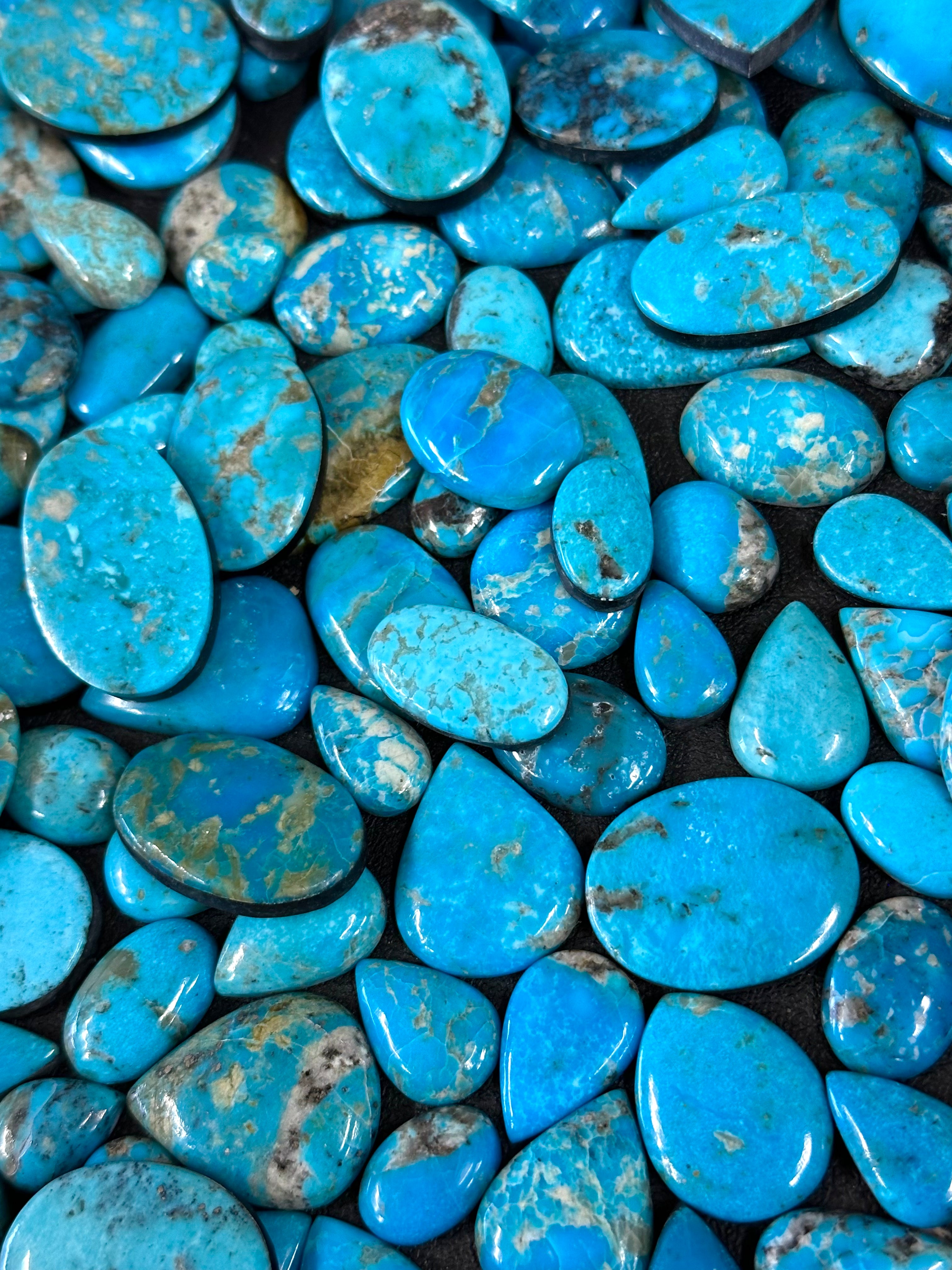STONE GUIDE
OUR SACRED STONES:
Turquoise
To the Navajo people, turquoise is considered a sacred stone that has been used for generations in jewelry, ceremonies, and rituals. Also known as the “sky stone” It is believed to be a powerful protective amulet, capable of warding off negative energies and bringing good fortune and harmony to the wearer. The stone is often used in ceremonies and rituals to invoke blessings, connect with ancestors, and seek spiritual guidance. The beauty and symbolism of turquoise continue to play a vital role in Navajo tradition, rituals, and artistic expressions, serving as a testament to the enduring cultural heritage of the Navajo people.
Spiny oyster shell
holds significant cultural and symbolic meaning to the Navajo tribe. Beyond its aesthetic appeal, the spiny oyster shell also carries spiritual significance. It is regarded as a sacred material that connects individuals to the ocean, symbolizing the life-giving properties of water and the flow of energy. The shell is believed to harmonize the physical, mental, emotional and spiritual aspects of the wearer, promoting balance and well-being.
Wild horse
Wild horse is a unique variety of magnesite found in Gila County, Arizona. It gets its name from the distinctive pattern resembling the colors and markings of a wild horse’s coat. The wild horse stone is associated with strength, freedom and the spirit of the wild west. It is considered a powerful stone that brings courage, endurance and a sense of adventure to those who work or wear it. The stone is believed to enhance one’s connection to nature, promoting harmony and a deeper understanding to the natural world.
Larimar
While larimar is not traditionally associated with specific native american tribes, it is often regarded as a stone that promotes tranquility, healing and connection to the sea. It is considered a stone of emotional healing and spiritual purification,helping to calm the mind, sooth the emotions and promote a sense of inner peace. While larimar’s specific significance may vary among different indigenous peoples, its beautiful blue color and healing properties make it a cherished gemstone.
Lapis
Lapis Lazuli is a gemstone that has been treasured for centuries in various cultures. Lapis, which primarily originates from Afghanistan and other parts of the middle east, is not native to the Americas. That said, lapis has been associated with qualities such as wisdom, truth, and spiritual insight. It is believed to enhance mental clarity, intuition, and spiritual growth.
Coral
Coral holds a special place in the artistry of Native American cultures. Renowned for its vibrant hues ranging from deep red to pale pink, coral is treasured for its natural beauty and symbolic significance. Native American artists often incorporate coral beads, cabochons, and inlay into their jewelry and crafts. In Native American traditions, coral is believed to bring protection, vitality, and strength to the wearer.
Bumblebee Jasper
Bumblebee Jasper, with its vibrant yellow, black, and gray patterns, holds a special significance in the world of gemstones. It is known as a stone of vitality and positivity, radiating joyful energy and encouraging personal growth. Bumblebee Jasper is believed to inspire creativity, awaken inner strength, and promote mental clarity.
This unique gemstone is cherished for its ability to uplift and bring about a sense of motivation and enthusiasm. It is also associated with the solar plexus chakra, representing personal power and transformation.

